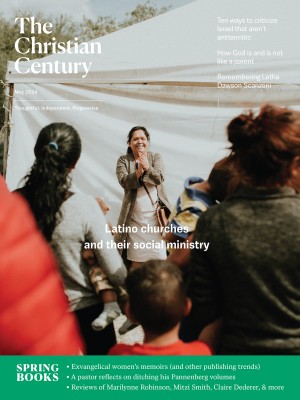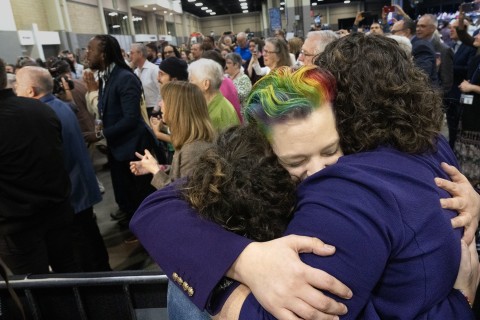Anthony Hecht’s poetic vision
W. H. Auden’s most distinguished heir wrote poems that bear witness to history with great depth of feeling.

Collected Poems of Anthony Hecht
Including Late and Uncollected Work
Having the collected poems of Anthony Hecht should allow us to see that his work, central to 20th-century American poetry, is all of a piece. It is unified by the sacrifice at the heart of modern history, the Holocaust—a subject to which Hecht . . . returns isn’t the right word exactly. It is a subject that emerges, organizes, stares out from, haunts, limns, and throws into relief Hecht’s often classically proportioned, courtly, and virtuosic verses, baroque bronzes with molten cores, dances—for they are always in motion—of mordant postures and sprezzatura, the black humor of the tarantella, the ghostly wit of the minuet, and the waltz with its studied and surprising intimacy.
The singular excellence of each poem as verse might distract from the overall excellence of the poet’s work. In fact, Hecht is the most distinguished heir to the poetry of W. H. Auden. Like him, Hecht employs a variety of verse forms to bear witness to history. Many poets of Hecht’s generation suffered in the shadow of Auden, but Hecht thrived there and made art with a depth of feeling we might sometimes miss from Auden’s work. Hecht made a poetry that is distinctly his own, outstanding and original as his own witness. We can see that now.
Read our latest issue or browse back issues.
Perhaps Hecht’s most famous poem is “A Hill,” the first poem in his second book, The Hard Hours. Much ink has been spilled at the foot of this mysterious vision, which according to the poem appears to the speaker on a sunny day in Rome, where our American (I choose to think of him as Hecht’s representative when a fellow of the American Academy of Rome, a position held by Hecht in 1952) is enjoying the day with a group of friends, “Picking my way through a warm sunlit piazza,” when a vision of “plain bitterness” interrupts his pleasure. A hill appears, “mole-colored and bare,” in a desolate winter landscape where the trees are like “old ironwork gathered for scrap / Outside a factory wall,” replacing “the great Farnese Palace.” All his memory does in the poem, apparently, is to recall a similar hill outside Poughkeepsie, New York, where for some reason he stood “for hours in wintertime.”
Except to admit that this vision occurs in Italy, “where this sort of thing can occur,” he refuses to identify the hill. We are left to speculate, since it combines so many other hills or mounts, from Sinai to Golgotha to Purgatory to the Mount of Olives, the hills of Moses and Christ. Hecht’s hill is significant for its spiritual importance, but it is also challenging for its bare and unadorned thingness. That it is mole-colored is permission to think of it as having existence below the surface of consciousness, in “the burrows of the Nightmare,” to steal an image from Auden. It is the archetypal symbol in Hecht’s poetry, coming back as he comes back to the Holocaust and its piles of sacrificial cerements and burning bodies.
Once you have heard the note and inferred the image of the Holocaust in the poetry of Hecht, you can never not hear it or unsee it. His late poem, “The Book of Yolek,” a sestina of great force in its quiet declarations, alters the ritual of the Passover meal and the expectation of Elijah, for whom a place is set traditionally, to the entry of Yolek, a Jewish boy who is depicted at a summer camp but is transported to a Nazi death camp, with other boys and girls, and killed there. Yolek—like Banquo’s ghost in Macbeth—is a reminder of guilt, historical guilt in this case, and his presence disquiets all rituals of peace.
The boy Yolek is the prophet who descends from the mount represented in “A Hill.” He also arises from Hecht’s own childhood memory of going to summer camp alongside the recognition that in Europe at the time, Jewish children and their parents were liable to be denied and forbidden such pleasures and escapes. Despite the gorgeous poetry Hecht creates, that bare and desolate fact of history exists as an essential part of some of the most beautiful and haunted verses in American poetry, or in any poetry of our time.
In Hecht’s fallen world, the sacrificial lamb—the child who will die for us and lead us—is real but does not provide substitutionary atonement. Rather, like Elijah, and his incarnation Christ, he stands at the door and knocks, enters, joins us at our table, and breaks bread with us in awe. That awe, the awe of art and creation, is our redemption. We get to experience it in Hecht’s most extravagant poems, like “Rites and Ceremonies” and “See Naples and Die,” and in those precisely etched, like “The Seven Deadly Sins,” a sequence of epigrams with woodcuts by Leonard Baskin. So many of Hecht’s poems have become anthology staples. To have almost all of them together makes this collection a true treasure.
Some have chosen this occasion to say a final critical word about this great poet and have based their judgment solely on appearances of his period, such as formalism. These critics fail to recognize Hecht’s formalism as a mode of disguise or indirectness, meant to accommodate subject matter that needs the incisive blade of understatement rather than the bludgeoning of oratorical effect. Hecht himself might respond with the title of one of his best poems, quoting Hamlet’s advice to the players about overacting: “It Out-Herods Herod. Pray You, Avoid It.” The contention of poetry at any time is and will always be how to reflect the time, to say what happened. Let Hecht have the last word with section 5 of “A Little Cemetery,” one of the uncollected works included here:
Here lies a poet briefly known as Hecht,
Whose verse was damned as being “too correct”
By diverse rhapsodes whose unlettered song
Was fluent and conspicuously wrong.





